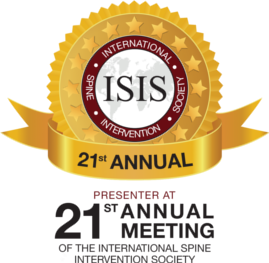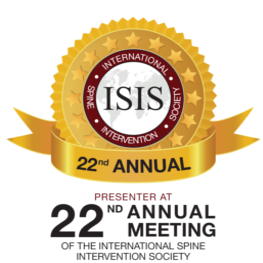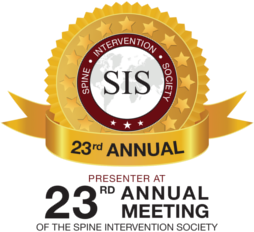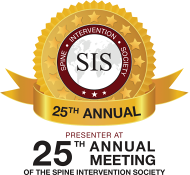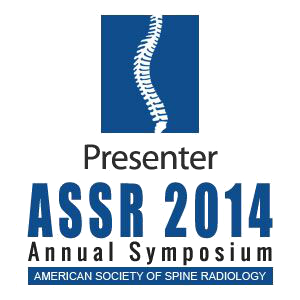Should I undergo surgery to treat my spinal stenosis? You may want to be involved in this decision or simply adhere to your doctor's treatment advice. Either way, you are in the right place if you wonder whether you are an excellent candidate for spinal stenosis surgery.
If therapeutic injections and medications have not helped reduce the pain and debilitating symptoms caused by spinal stenosis, your pain doctor could recommend surgery to lessen the pressure on your spinal cord and nerves. That is particularly true if your condition is causing severe symptoms.
Recognizing signs and symptoms that show you need spinal stenosis surgery is important to avoid further complications and maintain your quality of life.
Spinal Stenosis at a Glance
Spinal stenosis occurs due to the narrowing of spaces in your spinal canal, creating pressure on the spinal cord and the nerves that pass through it. The spinal canal is the tunnel or hollow space that runs through each of your vertebrae in the spine and is the one that houses the spinal cord.
When the space within your spinal canal reduces, your spinal cord and the nerves that pass through it will become cramped or pinched, causing some disruptive symptoms, including:
- Pain
- Limb weakness
- Numbness
- Tingling
- Difficulty walking
- Balance issues
While it could affect any part of your spine, spinal stenosis most often affects the following regions of your spine:
- The lower back
- Neck
- Your middle back
The cause of spinal stenosis is age-related, primarily degenerative health issues, like bone spurs and osteoarthritis. However, it could also be due to injuries, disc herniation, thickened ligaments, congenital conditions, and tumors. If you have experienced any of the above symptoms of spinal stenosis, you should consult with a doctor immediately for diagnosis and appropriate treatment.
Your doctor will diagnose you thoroughly using imaging techniques like computed tomography (CT) scans, magnetic resonance imaging (MRI), and X-rays to create a personalized treatment plan for your unique condition. Depending on the seriousness of your unique condition, your doctor could recommend the following treatments:
- Medications like NSAIDs, corticosteroids, or neuropathic pain relievers, for example, gabapentin
- Physical therapy, including exercises and massage
- Physiotherapy
- Lifestyle adjustments
- Minimum invasive spinal decompression procedures
- Spinal surgery (in severe cases)
If you have noticed any signs of spinal stenosis, prompt intervention is key to effectively treating the condition and preventing further damage to your nerves and spinal cord.
Five Signs That Indicate Your Spinal Stenosis Requires Surgery
Your doctor can treat mild spinal stenosis using non-surgical procedures, like medications and physical therapy. However, in severe cases, where these conservative treatments are ineffective and your symptoms are severe, the doctor will likely recommend surgical treatment options. Surgical treatments can help widen your spinal canal to ease the pressure on the pinched nerves and spinal cord.
Worsening or Persistent Pain
When the back or neck pain caused by the condition becomes progressively worse or constant, even after taking medication and physical therapy, that could be a sign that your spinal canal has become extremely narrow. In that case, surgery could be necessary to ease the pressure caused on your spinal cord and nerves to restore your comfort.
Weakness, Tingling, and Numbness in Your Limbs
Once the nerves that pass through the spinal canal become pinched and compressed, you will likely experience weakness, tingling, and numbness in your limbs, including feet and hands. When these symptoms become persistent or keep worsening, that could indicate that the affected nerve functions are deteriorating and could become worse when left untreated.
In this case, surgical treatments could help relieve the pressure and decompress your nerves, preventing further damage.
Difficulty Standing or Walking for Extended Periods
Neurogenic claudication, which triggers heaviness, pain, and cramping in your legs when standing or walking, is a telltale sign of lumbar spinal stenosis. If you frequently need to take breaks, sit down, or lean forward while working to ease the discomfort, surgical treatment options could help restore your mobility.
Loss of Coordination and Balance
When you have spinal stenosis, particularly in your cervical spine, you could experience coordination and balance issues. If you have challenges walking on a straight line or experience frequent falls, that could be a sign that you have a severe spinal decompression that could necessitate surgical intervention.
Loss of Bowel or Bladder Control
Severe spinal stenosis could lead to cauda equina syndrome, which is a severe health issue where compression of your nerves causes the loss of bowel and bladder functions, numbness in your saddle area, and severe leg weakness. If you have these symptoms, you should consult a healthcare provider for surgical intervention to prevent further or permanent damage.
Quick intervention by a reliable healthcare provider is key if you or a loved one is experiencing these symptoms of spinal stenosis, which could deteriorate with time.
Should I Undergo Surgery for My Spinal Stenosis?
The spine is a highly complex and sensitive structure essential for mobility and nerve function. Therefore, if you have spinal stenosis, your doctor will consider surgical treatments as the last option if other conservative treatments, including medication and physical therapy, are not helpful.
The symptoms described above could also be a sign that you need to undergo surgical treatment to fix your condition. Other factors your spine doctor will consider before recommending surgical treatment options for your spinal stenosis include the following:
- Whether the anatomy of your spine is ideal for surgery
- Whether you have any other medical conditions
- Your overall health
A thorough diagnosis could be necessary to determine whether you are an excellent candidate for spinal stenosis surgery. If you have spinal stenosis, your spine specialist or spinal neurosurgeon could recommend any of the following surgical treatment options if your symptoms are severe and non-surgical treatments are not helpful:
Decompression Surgery
Also known as laminectomy, decompression surgery is the most common surgical option that many spine specialists will recommend to treat spinal stenosis. During this surgery, your surgeon will remove the posterior part of your vertebral bone, the lamina. The lamina helps support and protect the back part of the spinal cord inside the vertebrae.
Removing this lamina helps reduce excessive pressure on the spinal cord and the nerves by creating more space in the spinal canal (the hollow spaces that hold the spinal cord). In many cases, the surgeon will recommend decompression surgery if you have lumbar spinal stenosis that causes severe pain in your lower back.
However, this surgical treatment can help lessen the pain and discomfort caused by spinal stenosis in any part of your spine, including the neck. During decompression surgery, your surgeon will do the following:
- Make a cut or incision on your lower back (lumbar spinal stenosis)
- Move or separate your skin, muscles, and ligaments to the side for easy access to your spine
- Using a surgical microscope, he/she will look at the affected region of the spine
- Remove part or all of the lamina, bone spurs, disc fragment, and the affected soft tissues
- Perform a spinal fusion procedure, which helps stabilize bones in your spine, or a foraminotomy, which opens the spinal canal for your nerve roots
- Move your ligaments, muscles, and the cut skin back in place
- Stitch or sew the skin to close the incision site
Decompression surgery generally takes one to three hours, depending on the affected spine region or if it is part of a more complex surgical procedure.
Discectomy
If an injured or herniated disc is causing extreme pressure on your spinal cord or nerves, your surgeon could recommend a discectomy. During a discectomy procedure, your neurosurgeon can directly access the affected disc through a minimally invasive (microdiscectomy) procedure or incision.
During this procedure, the surgeon will remove all or part of the affected intervertebral disc in your spine. An intervertebral disc is the round, flat cushion between the vertebrae in your spine that helps absorb shock. When this disc tears, its material (nucleus pulposus) will leak out, causing a condition known as a herniated disc.
Your surgeon is most likely to perform this procedure during a laminectomy if the affected disc in your spine is applying pressure on your spinal cord or nerves, leading to spinal stenosis.
Spinal Fusion
Sometimes, your surgeon will perform this surgical procedure along with a laminectomy. If you have spinal stenosis and instability in your spine due to a vertebra that is out of place, your surgeon could recommend spinal fusion.
During spinal stenosis surgery, your surgeon will join one or more vertebrae to lessen their movement within your spine (backbone), keeping you from stretching the nearby ligaments and nerves, which causes discomfort. Spinal fusion surgery can vary depending on the specific part of your spine that is affected and the type of fusion you need.
To access your spine, the surgeon can make an incision on the side (lateral), front (anterior), or back (posterior). After the incision, the surgeon will move your muscles and surrounding structures to the side to easily access the spine. Then he/she will remove the joints between the damaged or painful discs in your spine.
During the spinal fusion process, the surgeon will join the unstable vertebrae using metal rods and screws, which will remain in place like “internal braces” to help keep your bones in proper alignment. Your surgeon could also use a bone graft, typically removed from any part of your body (mainly the hip bone) or a donor through the bone bank, and place it between the fused vertebrae to strengthen it.
Over time, the fused bone will heal and fuse into one bone, giving your spine the strength and stability it needs to support your body. Spinal fusion surgery also helps lessen the bothersome symptoms caused by the slipped-out vertebrae that put pressure on your nerves.
Foraminotomy
Foraminotomy surgery can help reduce the pressure on the nerve roots in the backbone if you have spinal stenosis that affects the foramen. During this procedure, the surgeon will open your foramen, the opening on your vertebrae where the affected nerve roots exit the spinal canal.
Since these nerves make up the peripheral nervous system, when your foramen narrows, you will experience bothersome pain around the affected region, affecting your movement. Fortunately, your surgeon can perform this procedure using minimally invasive techniques that allow him/her to access the affected part of the spine through a minor incision on your back, where he/she places a small tubular device.
Using live digital X-ray pictures on the monitor, your surgeon will guide a small surgical tool through the tube to remove any cartilage, ligaments, or bone spurs constricting your nerves as they travel through the foramen. After doing that, the surgeon will remove the tube and close the incision site using stitches or staples.
It is worth noting that the surgeon can perform this procedure at different places of your spine, including the lower back, neck, pelvis, and tailbone. The specific location of your spine that triggers the bothersome pain and other disruptive symptoms of spinal stenosis will determine the area where the surgeon will perform foraminotomy surgery to fix the issue.
How to Prepare for a Scheduled Surgical Treatment for Spinal Stenosis
Like any other surgical procedure, prior preparation is necessary if you are scheduled for any surgical procedure to treat your spinal stenosis. Before your spinal stenosis surgery, your surgeon will recommend that you do the following:
- Exercise — Performing strength training exercises before your scheduled surgical procedure for your unique spinal stenosis issue can help you recover faster
- Stop smoking — In addition to increasing your risk of breathing issues during the surgery, smoking tobacco-related products can also affect the healing process
- Stop taking alcohol — Excessive alcohol consumption before your scheduled surgical procedure could affect the effectiveness of the anesthesia, which helps numb your incision site before the surgery
- Adjust or stop taking certain medications — If you are taking anti-inflammatory drugs or blood thinners, your surgeon could recommend that you adjust or stop taking these medications before the scheduled procedure because they can affect the success of the surgery. For example, blood thinners could increase your risk of excessive bleeding during the surgery
- Wear loose-fitting clothing — To help lessen the discomfort before and after the surgery, especially if the scheduled procedure is likely to cause limited mobility, you should consider wearing loose-fitting clothing like zip-up shirts and elastic-waist shorts or pants
- Make travel arrangements — Since the effects of the anesthesia and the sedatives your surgeon will use during your surgery could linger long after the procedure and affect your ability to drive cautiously, your surgeon will recommend making travel arrangements. That means consulting with someone trustworthy who can drive you back home after the procedure
- Make arrangements for all the help you need — After the spinal stenosis surgery, you could need help with certain activities during recuperation and healing. For example, doing laundry, dressing, shopping, or washing during the first few weeks after the treatment could be challenging and even affect healing. Hence, you should make necessary arrangements to receive help with these activities during that period
Your spine specialist or neurosurgeon will give you tips and guidelines on preparing for your spinal stenosis surgery during your first consultation with him/her.
Possible Risks You Could Experience During and After Your Spinal Stenosis Surgery
Like any other surgery, the surgical procedures the surgeon will recommend to treat your spinal stenosis could cause some complications and risks, such as:
- Infection
- Excessive bleeding
- Reactions to anesthesia
- Blood clots
- Nerve injury
- Failure of the rods and screws after the procedure
- A dural tear, which is a tear in the protective covering of the spinal cord (dura mater)
- Spine instability
These complications can occur during or after surgery for spinal stenosis, but you can reduce the chances of developing them by consulting an experienced, reputable, and licensed neurosurgeon.
Recovery Tips After Your Spinal Stenosis Surgery
After your spinal stenosis surgery, your surgeon will give you home-based care tips that can help accelerate the healing process and prevent complications. For example, your surgeon could encourage you to do the following:
- Wear a corset or brace to help support your back
- Walking short distances as soon as you can do so to help in your recovery
- Join physical therapy sessions to help strengthen your back and regain your full range of motion. During your physical therapy sessions, you should engage in exercises that can help maintain and build endurance, strength, and flexibility
For older adults, the surgeon could recommend spending some time at a rehabilitation facility before you head home after your surgical treatment. Generally speaking, returning to your work desk after spinal stenosis surgery will take a few days or weeks. However, it could take two to three months after the surgery to resume all your regular activities.
Ensure you follow your surgeon's recovery and healing guidelines for the best results within the shortest time possible.
Find a Licensed Spine Specialist Near Me
Symptoms caused by spinal stenosis can undoubtedly cause discomfort and affect your ability to perform your daily activities. If you have tried conservative treatment methods, like medications and physical therapy, but they are not helping ease the pain and other symptoms caused by the condition, you would want to consider a surgical procedure.
At LAMIS Institute, we have well-trained spine specialists who are passionate about back pain relief. We can help you determine whether your spinal stenosis issue requires surgery and offer the best treatment that is ideal for your unique condition. Call us at 310-734-6088 to schedule your initial appointment with us for consultation, wherever you are in Los Angeles.

